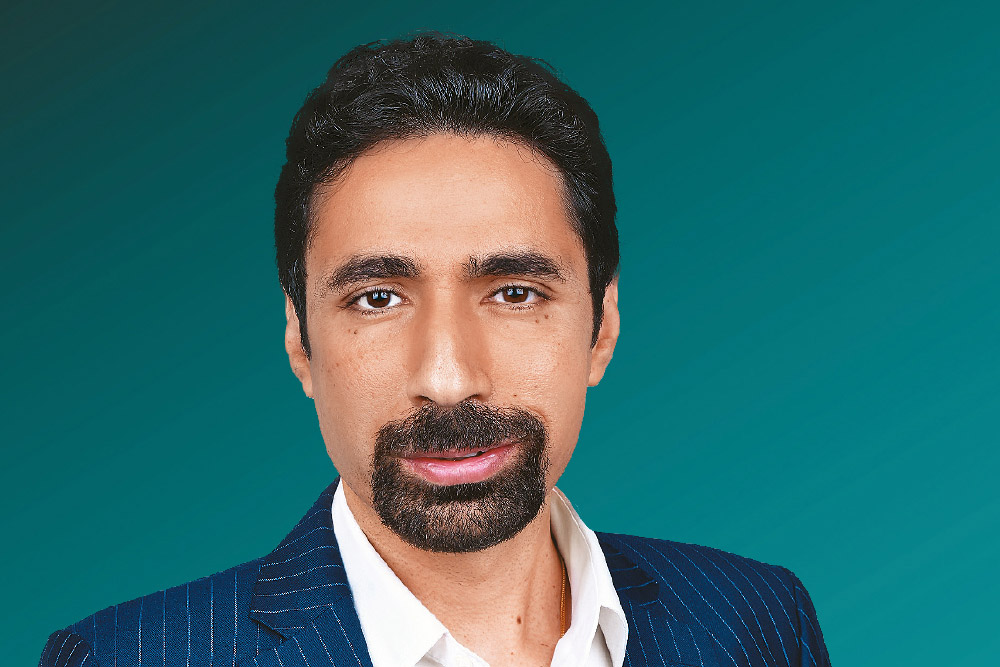There have been concerns about the valuations in the Indian markets. What do you think about the premium at which Indian markets are trading compared to others in the Asian region?
The valuations of Indian markets look high compared to the rest of the region. However, with MSCI India trading at 22 times forward PE right now, we think Indian equities are ‘richly’ valued, but not ‘overvalued’.
We think 20 times is probably a fair value for Indian equities based on the macroeconomic environment. However, relative valuations of Indian markets are not at the peak currently. Indian markets are trading at a 65% premium to the rest of Asia, way below the peak of 100% which we have observed about 18 months back.
What helps India is the consistent earnings delivery, which offsets the higher valuations. If one entered 2023 with the assumption that Indian markets were overvalued, they would have missed the ~20% rally. Profits last year grew by 20%, suggesting that the gain in large caps was entirely driven by underlying earnings growth. This consistency in earnings delivery is why we are positive about the India story.
Since Securities and Exchange Board of India (SEBI) has flagged concerns about small- and mid-cap segments, broader markets have seen corrections. How do you see the concerns over froth in these segments?
Strong domestic inflows drove a lot of these stocks higher. Both valuations and positioning for some of these companies got crowded. So, the correction we saw is quite healthy because it took out some excesses in the markets.
One of the core views we had coming into the year was that markets would rotate from small and mid caps to large caps. This seems to have already happened in the past five weeks.
Looking at how much these segments ran up in aggregate, we sense that the markets can see more price or time correction in the coming quarters.
Markets have seen a sharp rise in the number of retail investors. What has been the effect of this retail story on Indian equity markets?
We have been seeing strong SIP [systematic investment plan] flows for a while now. If you look at inflow from domestic institutional investors, they have been higher than FII [foreign institutional investor] numbers for three years in a row. It has been a few years already where the strong domestic flows are more than offsetting the weakness in the foreign flows.
We think some of it is secular because of this broader theme about the financialisation of household savings. In general, the Indian household is still under-invested. Households have around 6–7% ownership as a percentage of their balance sheets in equity markets, which is lower than the 15% average we have for the rest of the region. I think there is still room to grow.
This is offsetting weakness from foreign flows. It is also causing much lower volatility. During global risk-off moves, markets do not move much because retail investors buy on the dips.
Is there any difference in how foreign and retail investors read the Indian markets? Not everybody is aware of every fundamental parameter used to gauge stocks?
An FII typically tends to be focused on large caps. One of the reasons why we feel markets will rotate towards large caps is that foreign inflows will improve.
For retail [investors], their flows are going into the mid- and small-cap space. There is a huge divergence here. However, both are raising exposure in the Indian markets on the back of strong fundamentals. Foreign investors have a constraint in terms of liquidity in the small-cap space. A lot of companies in Make in India and energy transition themes are in the mid-cap space so FIIs are exposed to those themes and stocks.
In addition to retail investors directly investing in the stock markets, a lot of money is finding its way through mutual funds via the SIP route. So, there is a part of retail money being invested on the back of strong fundamentals.
Individual investors have been dealing in the futures and options market which is speculative in nature. How big a threat is this?
It is not a systemic concern for two reasons. One, we do not think a lot of the trading in these segments is happening on the margins. Two, the overall delta exposure in the system is not high because the bulk of activity is in the contracts that are expiring the same day. In this scenario, the chances of systemic risk from this segment to the broader markets are less.
What themes do you expect will dominate in 2024?
Last year was one of mid and small caps in India. This year will be about large caps. If you look at it from a factor lens, what has been working for India is ‘size’ factor—i.e. mid and small caps—but also the momentum and value factors.
We also think that investors will shift focus towards more quality pockets of the market. Hence, high-quality companies with strong balance sheets, cash flows and higher ROEs [return on equities] will start to do much better. There will be churning in the market. What is also encouraging is that over the past month or so, we have also seen foreign flows coming back in.
The reality of the Indian markets is that if you look at foreign ownership or foreign positioning in India, it is still relatively conservative, towards the lower end of its historical range over the past decade. There is strong room to grow.











